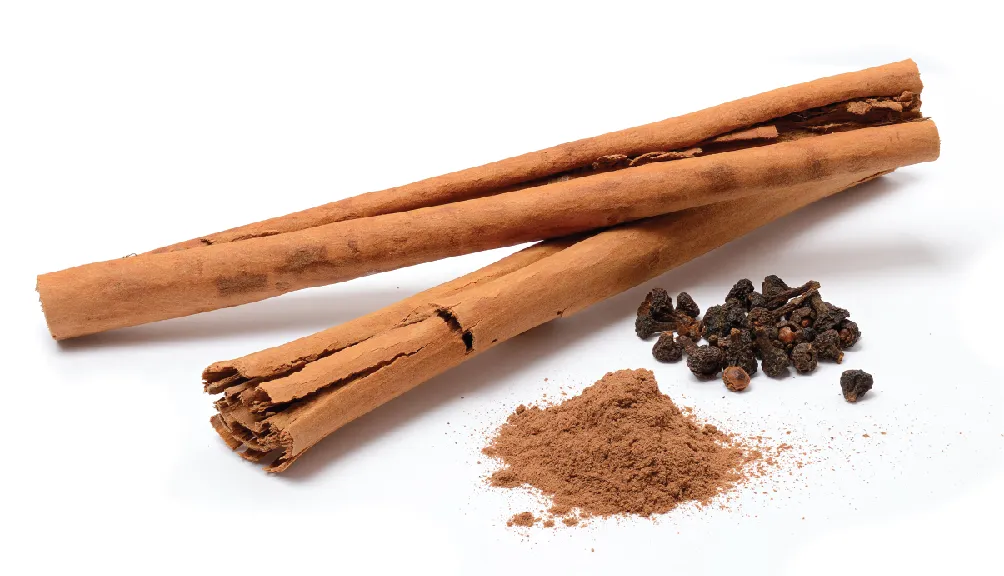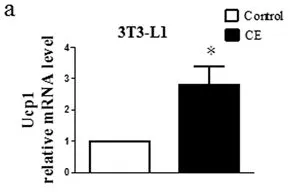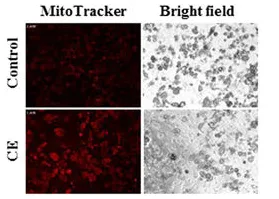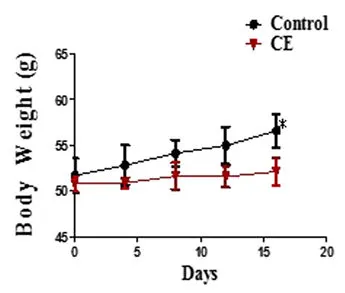Obesity, it's becoming quite an issue in the developed world. Sure, there are a number of causes for that and many of them we bring upon our selves. Acknowledging that doesn't make access to good healthy food options a viable reality for many people, nor does it change the plethora of diseases that come about because of obesity such as: type 2 diabetes, heart disease, cancer, high blood pressure, and that's just to name a few! [1]
Today we will discuss a research article published May 26, 2016 in the journal Nature: Scientific Reports titled "Cinnamon induces browning in subcutaneous adipocytes". Which is an article discussing of all things... the ability that cinnamon has in converting white fat to brown fat.

White Fat... Brown Fat...? I Thought Fat Was Fat and That Was That
In the body, fat is stored in specialized cells called adipocyte cells. Which I am sure many of you are aware of (so wait @justtryme90, hold the presses, your telling me fat is stored in fat cells... duhhhh). Yes...
However what you may be unaware of is that there are two classes of adipocytes in the body, one called white and the other called brown. White adipocytes are basically a little bit of cytoplasm and a big blob of fat molecules (lipids!). Brown adipocytes are a bit more structured, and contain a whole bunch of mitochondria (which you know are THE POWERHOUSE OF THE CELL!!!).
These mitochondria are the reason that the brown adipocytes having a brown color. Brown adipocytes are the cellular component of what we call Brown Fat, which is something that babies have a lot of to keep them warm (all those mitochondria generate lots of ATP and that can be used in conjunction with a protein named uncoupling protein 1 to generate heat through a process called "non-shivering" thermogenesis). [3]
This generation of heat seems like a great way to use up energy and burn up those stored lipids in the fat cells right? Unfortunately for us non babies, the amount of brown fat in the body is thought to progressively decline as we age with older people having less and less of it.

So Wait, These Authors Were Looking At Cinnamon...?
Yeah, Cinnamon. They were looking at cinnamon extract in relation to a process called browning, which is a way that the body can increase the numbers of a particular kind of brown fat cell (as if there would be only one kind... tch... this is science, and biology no less. We crave as many classifications for things as possible! ) called a brite cell (it's actually a white fat cell that expresses lots of the uncoupling protein 1 found in the brown fat cell mitochondria... and the jury is still out on whether it is REALLY a brown fat cell, but lets leave the arguing about that distinction to the scientists who don't have anything better to do but argue about the classifications of fat cells and just call it a brown fat cell).
Interestingly Cinnamon has been found to have a variety of beneficial effects on the body including anti-inflammatory functions, and increased metabolism.[4], [5] However no studies had looked at the effects of cinnamon extract on this adipocyte browning process. So the authors of this article set out to change that.
Lets Take A Look At Some Of Their Interesting Results
Cinnamon Extract Reduces The Lipid Content Of Adipose Cells

One of the first things they did was to look at the amount of lipid (fat) molecules present in some white adipose cells before, and after treatment with cinnamon extract. To do this they used a red dye called "Oil Red O" which stains lipids. (A) shows you the white adipose cells, filled with nice big blobs of fat.. mmmmmm... I mean yuck. (B) shows you the cells after a 24-hour treatment with the cinnamon extract (80 ug/mL). You can see that those bit blobs of fat are now broken up into smaller blobs, and there appears to be less. The authors quantified the relative amounts in each, and that is plotted in (C). There is a statistically significant reduction in the quantity of lipids in the cells (as judged by the amount of Oil Red O) after treatment with the cinnamon extract.
Cinnamon Extract Increases Expression of uncoupling protein 1 in white adipose tissue

Here is a plot of the amount of mRNA (the instructions which tell the cell to make a particular protein) encoding for the protein uncoupling protein 1 (Ucp1). We can see that in the cells the relative amount of this protein is drastially increased after treatment with the cinnamon extract (CE in the legend of the graph above). If you recall what we talked about earlier was that this protein is responsible for the energy burning, heat generating (thermogenesis) performed in brown fat mitochondria!
So far we see that the amount of lipids in the cells decreases, and the amount of uncoupling protein 1 increases upon treatment of some cells with a cinnamon extract.
The Increased Uncoupling Protein 1 Comes With An Increase In Number of Mitochondria

So here the authors were using a stain (MitoTracker Green) that specifically targets and stains mitochondria. Ironically despite its name of MitoTracker Green, they colored their figure red... anyway. So here on the looking at untreated (top) and cinnamon extract treated (bottom) cells. The panes on the left are with the mitochondrial stain, and on the right are just a regular light microscope image so you can see where the whole cells are at. What is clear from this picture is that the amount of mitochondria present are increased in the CE treated cells (they are much brighter with the mitochondrial stain then the control untreated cells).
Taking Things A Step Further... To The Mouse Model (as usual!!!)
So things were looking pretty interesting in a cell based model, really looks like the cinnamon extract is leading to a conversion from a white adipose cell, to a brown adipose cell (decreased lipid content, increased mitochondria, and increased uncoupling protein 1 are all hallmark characteristics of brown adipose tissue). The authors confirmed that these results were reproducible when similar experiments were performed on adipose cells extracted directly from obese mice (it's in the paper but for the sake of the length of this already long post I won't show it)
Now the authors wanted to see whether or not giving obese mice cinnamon extract orally, reduced body weight and increased the expression of the uncoupling protein 1.

So they fed the mice a high fat diet to cause weight gain in the mice, some of the mice also ate a whole bunch of cinnamon extract (500 mg/kg body weight, jeez that's a lot for me that would be about 1/10 of 1 lb of cinnamon extract LOL) daily for 15 straight days. What you see above is that the body weight of the mice who were not consuming the cinnamon extract steadily went up, while the body weight of the mice receiving the cinnamon did not. Interesting.
The authors looked into why this was and found that the only indicator that could explain the lack of weight gain in the cinnamon mice, was an increase in the expression levels of uncoupling protein 1 in their fat tissue.
Conclusions
The authors showed here that cinnamon extract was able to significantly increase the expression levels of uncoupling protein 1 in both a cell and mouse model. Uncoupling protein 1 is involved in the thermogenesis process and extra heat generation burns calories and can lead to weight loss.
The authors data shows that supplementation with cinnamon extract helped to keep mice being fed a high fat diet from gaining as much weight as their counterparts not receiving the cinnamon. In all their data suggests that cinnamon may be a way to help combat the obesity epidemic, as it appears to be able to increase the generation of brown fat cells (which as we discussed above goes away as we age).
Sources
- http://glahder.dk/engelsk/obesity/obesity-Roland-Sturm.pdf
- https://www.nature.com/articles/s41598-017-02263-5
- https://www.ncbi.nlm.nih.gov/pubmed/16513826
- https://www.ncbi.nlm.nih.gov/pubmed/18424588
- https://www.ncbi.nlm.nih.gov/pmc/articles/PMC2602825/
- https://www.ncbi.nlm.nih.gov/pmc/articles/PMC2446425/
All Non Cited Images Are From Pixabay.com And Are Available Under Creative Commons Licenses
Any Gifs Are From Giphy.com and Are Also Available for Use Under Creative Commons Licences
Images from figures in Nature: Scientific Reports articles are available for reuse under a Creative Commons license (all figures will be appropriately attributed and linked back to the article of reference).
If you like this work, please consider giving me a follow: @justtryme90. I am here to help spread scientific knowledge and break down primary publications in such a way so as to cut through the jargon and provide you the main conclusions in short (well compared to the original articles at least!) and easy to read posts.